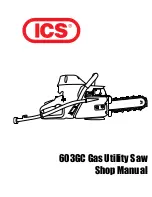
4
Operating range
This cordless telephone operates with the maximum power allowed by the Federal Communications
Commission (FCC). Even so, this handset and telephone base can communicate over only a certain distance
- which can vary with the locations of the telephone base and handset, the weather, and the layout of your
home or office.
When the handset is out of range, the handset displays
Out of range OR Base no power
.
If there is a call while the handset is out of range, it may not ring, or if it does ring, the call may not connect
well when you press
/HOME
. Move closer to the telephone base, then press
/HOME
to answer the call.
If the handset moves out of range during a telephone conversation, there may be interference. To improve
reception, move closer to the telephone base.
Energy-saving charging mode
When this mode is activated, all telephone functions, except handset battery charging, will be disabled.
To activate the energy-saving charging mode:
. Unplug the telephone base power adapter from the power outlet. Make sure all handsets are plugged with
charged batteries before proceeding.
. While you press and hold
FIND HANDSET
, plug the telephone base power adapter back to the
power outlet.
3. After about 0 seconds, when the
IN USE
light starts flashing, release
FIND HANDSET
and then press it
again within seconds.
When the phone successfully enters the energy-saving charging mode, the
IN USE
light turns off
and all handsets display
To register HS, see manual.
When the phone fails to enter this mode, repeat Step through Step 3 above.
Note:
The telephone base will be powered up as normal if you fail to press
FIND HANDSET
within seconds
in Step 3.
To deactivate the energy-saving charging mode:
. Unplug the telephone base power adapter from the power outlet, then plug it back in. Then the telephone
base is powered up as normal.
. Register your handsets back to the telephone base. See page for handset registration instructions.
Maintenance
Taking care of your telephone
Your cordless telephone contains sophisticated electronic parts, so it must be treated with care.
Avoid rough treatment
Place the handset down gently. Save the original packing materials to protect your telephone if you ever need
to ship it.
Avoid water
Your telephone can be damaged if it gets wet. Do not use the handset outdoors in the rain, or handle it with
wet hands. Do not install the telephone base near a sink, bathtub or shower.
Electrical storms
Electrical storms can sometimes cause power surges harmful to electronic equipment. For your own safety,
take caution when using electrical appliances during storms.
Cleaning your telephone
Your telephone has a durable plastic casing that should retain its luster for many years. Clean it only with a soft
cloth slightly dampened with water or mild soap. Do not use excess water or cleaning solvents of any kind.
About cordless telephones
Privacy:
The same features that make a cordless telephone convenient create some limitations.
Telephone calls are transmitted between the telephone base and the cordless handset by radio
waves, so there is a possibility that the cordless telephone conversations could be intercepted by radio
receiving equipment within range of the cordless handset. For this reason, you should not think of
cordless telephone conversations as being as private as those on corded telephones.
Electrical power:
The telephone base of this cordless telephone must be connected to a working
electrical outlet. The electrical outlet should not be controlled by a wall switch. Calls cannot be made
from the cordless handset if the telephone base is unplugged, switched off or if the electrical power
is interrupted.
Potential TV interference:
Some cordless telephones operate at frequencies that may cause
interference to televisions and VCRs. To minimize or prevent such interference, do not place the
telephone base of the cordless telephone near or on top of a TV or VCR. If interference is
experienced, moving the cordless telephone farther away from the TV or VCR often reduces or
eliminates the interference.
Rechargeable batteries:
Exercise care in handling batteries in order not to create a short circuit with
conducting material such as rings, bracelets and keys. The battery or conductor may overheat and
cause harm. Observe proper polarity between the battery and the battery charger.
Nickel-metal hydride rechargeable batteries:
Dispose of these batteries in a safe manner. Do not
burn or puncture the battery. Like other batteries of this type, if burned or punctured, they could release
caustic material which could cause injury.
The RBRC
®
seal
The RBRC
®
seal on the nickel-metal hydride battery indicates that VTech Communications,
Inc. is voluntarily participating in an industry program to collect and recycle these batteries at
the end of their useful lives, when taken out of service within the United States and Canada.
The RBRC
®
program provides a convenient alternative to placing used nickel-metal hydride
batteries into the trash or municipal waste, which may be illegal in your area.
VTech’s participation in RBRC
®
makes it easy for you to drop off the spent battery at local
retailers participating in the RBRC
®
program or at authorized VTech product service centers.
Please call
1 (800) 8 BATTERY
TM
for information on Ni-MH battery recycling and disposal
bans/restrictions in your area.
VTech’s involvement in this program is part of its commitment to protecting our environment
and conserving natural resources.
RBRC
®
is a registered trademark of Rechargeable Battery Recycling Corporation.
•
•
•
•
•
Remember that electrical appliances can cause serious injury if used when you are wet or standing in
water. If the telephone base should fall into water, DO NOT RETRIEVE IT UNTIL YOU UNPLUG THE
POWER CORD AND TELEPHONE LINE CORD FROM THE WALL. Then remove the telephone by the
unplugged cords.


































